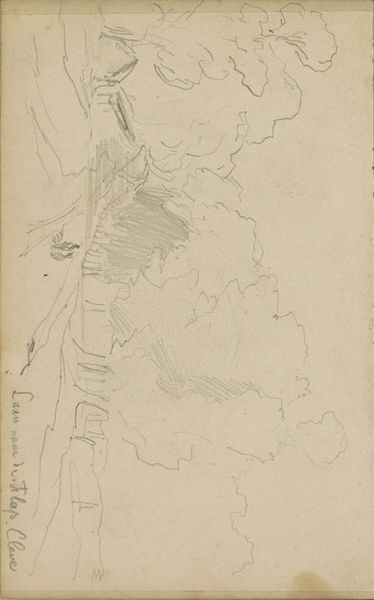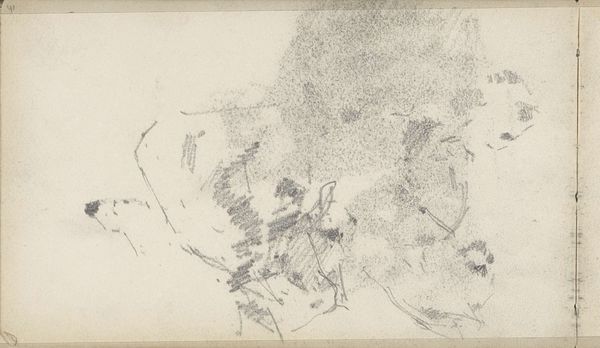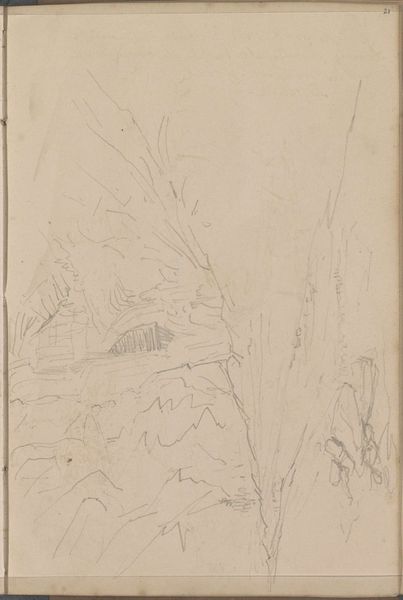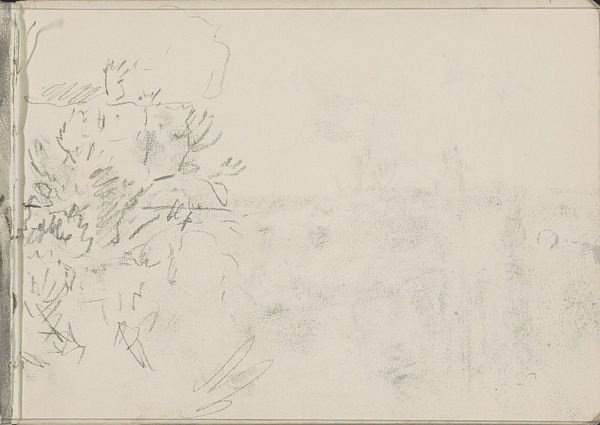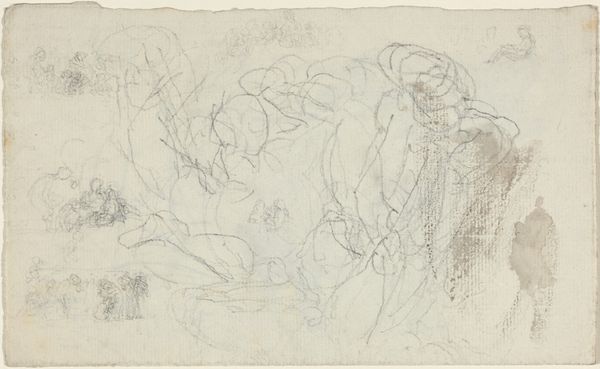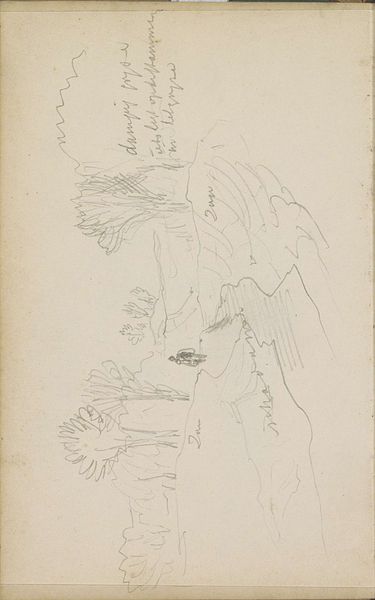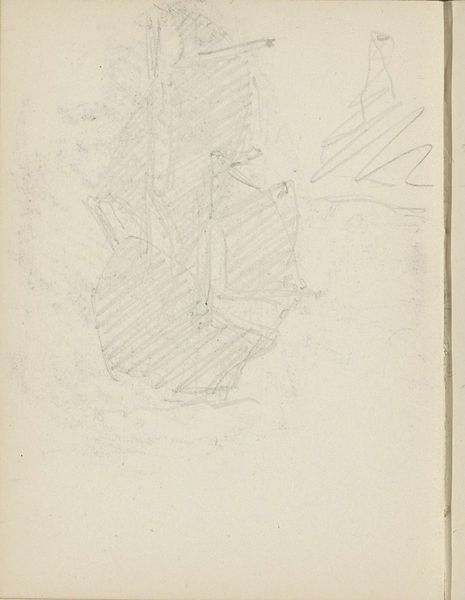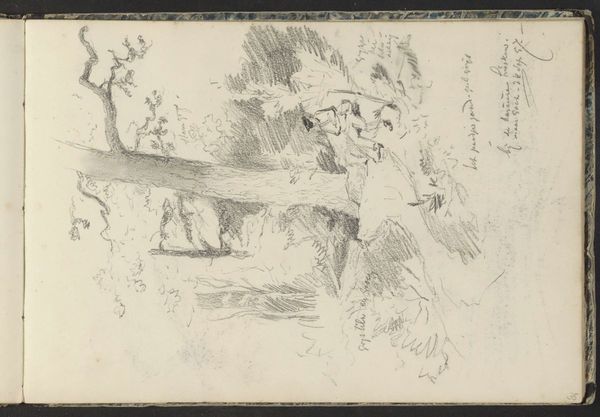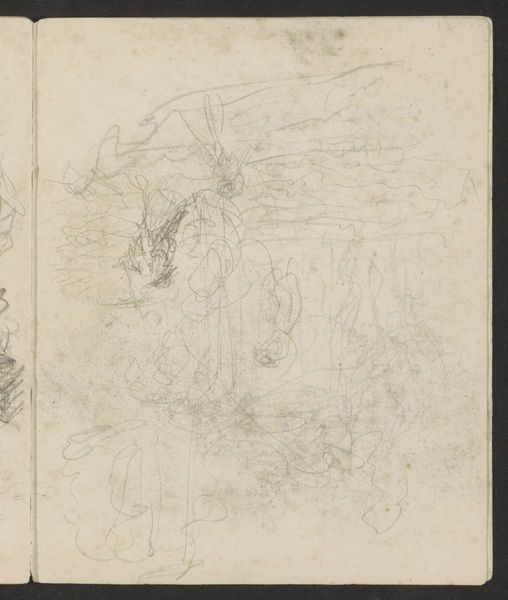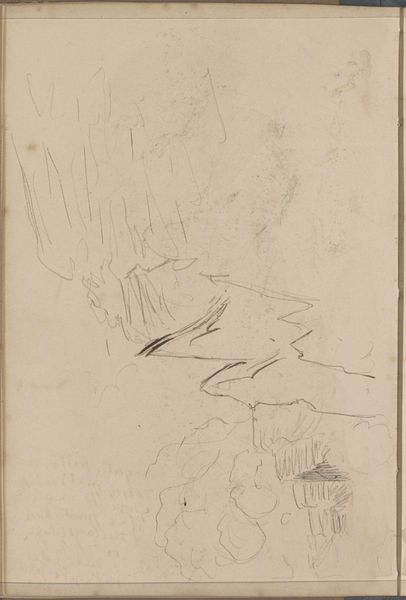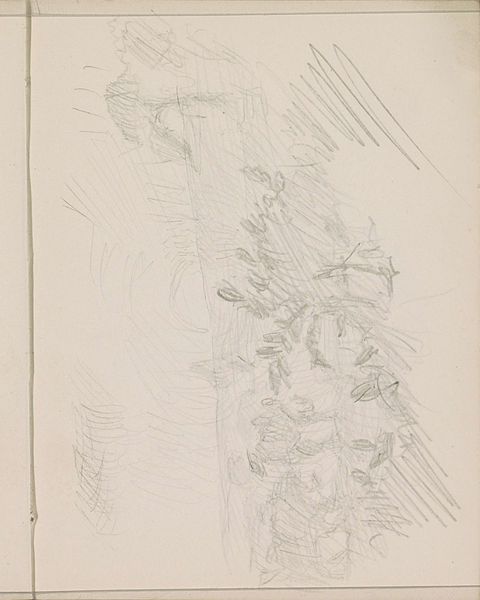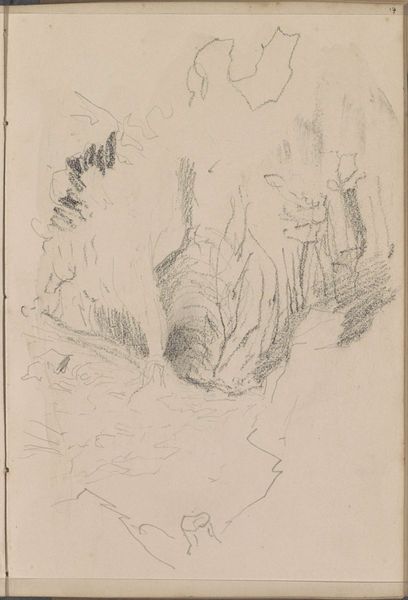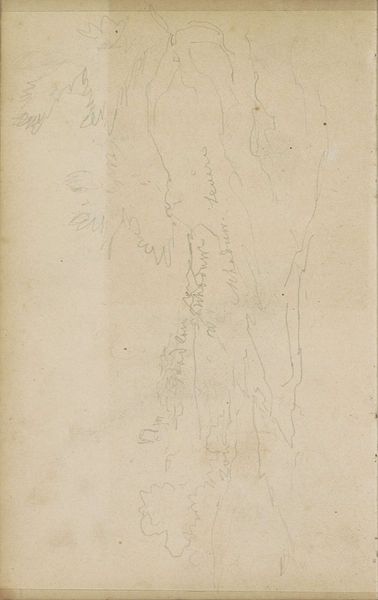
Copyright: Rijks Museum: Open Domain
Curator: Before us, we have Johannes Tavenraat’s pencil drawing, "Laan in de bossen van Kleef," dating from somewhere between 1839 and 1872. It's a Romantic-era landscape, currently held in the Rijksmuseum collection. Editor: It's all line and light. Very ethereal, like a memory fading at the edges. There's a dreamlike quality to this sketch of a forest lane. What first strikes you? Curator: Precisely! The drawing’s formal elements construct this fleeting quality. Note the loose network of pencil lines – how they define form, and just as importantly, how they leave form undefined. Editor: I see it too. The ambiguity is compelling. This location was very meaningful during the Dutch Romantic movement as the borders with Germany shifted and German Romantic influences swept across the country. How might this type of landscape composition contribute to forming a new sense of identity in that moment? Curator: That is very insightful, considering the composition here! The artist’s style evokes, even embraces, the notion of incomplete articulation of experience. I am intrigued by the light within the density of this wooded lane, and how the artist evokes texture. Editor: Indeed, how Tavenraat focuses on nature allows us to analyze landscape depictions of national territory through a lens of cultural, ethnic, or even gendered perspectives. Perhaps there's a call to remember a pre-industrialized homeland in "Laan in de bossen van Kleef." Curator: Returning to the visual organization, notice that he never closes a shape entirely, creating an interesting interplay of light and dark across the paper, almost shimmering to our eyes! Editor: Yes, the open forms contribute to a sense of openness, potentially reflecting social transformations of that time. It's not just a lane in a forest; it becomes symbolic of access and perhaps even questioning established social orders. Curator: That is definitely a possibility worth investigating further. Looking carefully at the composition of intertwined visual representations and experiences that emerge through Romanticism’s nature imagery, that allows us to more intimately access both artist and viewer. Editor: The beauty here lies in how it captures not just a place, but an atmosphere charged with cultural and political undercurrents. A place pregnant with yearning! Curator: You know, that's given me a fresh view of this work. Thank you. Editor: And likewise. It's a powerful testament to how art history intersects with contemporary understanding, especially using close looking to interpret social, political, or personal events!
Comments
No comments
Be the first to comment and join the conversation on the ultimate creative platform.
